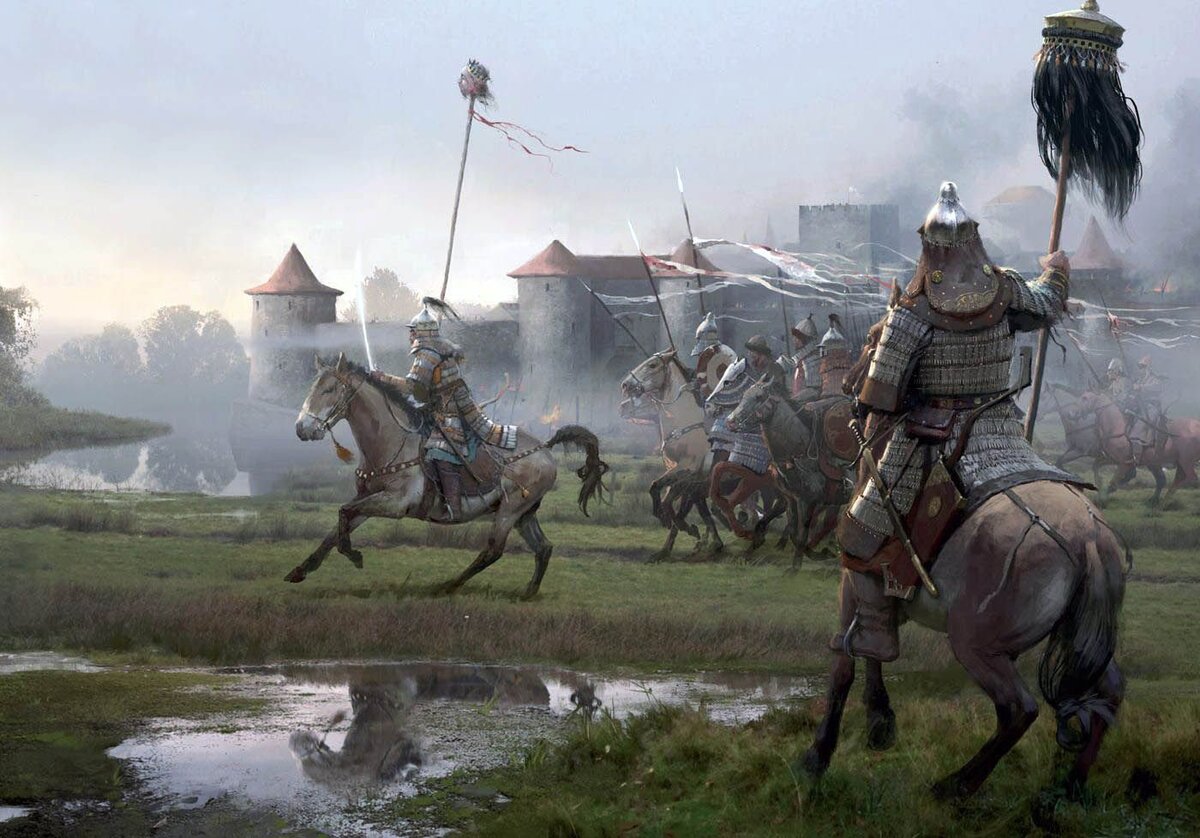After conquering Russia, Batu was forced to let some of his army go home. A few tumen headed by his personal enemy, Güyük, went to Mongolia. Nevertheless, invasion to Europe in 1241th has been undertaken by own forces of forming Golden Horde. Hungarians and Poles have suffered defeats at Shayo and Legnica with difference in two days, and their grounds without interference began to plunder nomads. The next year it was planned to go further west, but when messengers brought news of the departure to the Mongol gods of the great khan, it was necessary to turn the horses around to solve dynastic issues.
For several decades Batu and his descendants were engaged in the arrangement of their newly formed state, the establishment of Russia’s yasak dependence, fought for the fact that on the imperial throne sat people friendly to the ulus Dzhuchi, competed with the Mongol states in the Middle East and Central Asia. Berke and other rulers every five years sent messages to Hungarian kings demanding that they recognize their authority and give men for a large-scale campaign to the west. But objective reasons prevented its realization.
Finally, Nogai, the powerful beklarbek of the Golden Horde, gathered all forces in a fist to strike. There was no war at that time, and the Tatars had an opportunity to gather very significant forces. They decided to use the plan of the great Subudai, and send to the west at once three equal armies, which repeated the way of 1241. The invasion took place in the winter of 1285 to prevent the Hungarians from gathering men and taking them by surprise.
But King Béla IV, who succumbed to the nomads at the battle of Szajó, drew the proper conclusions and carried out reforms. The citadel of Esztergom and the Croatian castle of Klis, attacked by the Mongols during the first campaign, did not succumb to the enemy and stood firm. Voila — by the end of his reign, the country was enveloped in a network of stone fortifications. About a hundred fortresses managed to build this influential ruler. Unlike his predecessors, who defended only the west, Bela IV shifted the vector of construction to the east.
At the Battle of Chaillot, the Hungarian light cavalry succumbed to the Mongols and fled, but a small detachment of Templars had some success. Realizing this, the king converted the available forces into heavy knightly cavalry and invited the Hospitallers into the country to help supply the army with horses and train the men.

During the first battle, the number of crossbowmen in the Hungarian army was minuscule, but they proved their worth. Bela wrote a letter to the pope to set him up with the Doge of Venice. As a result, he was able to recruit an unlimited number of crossbowmen-Italians.
Unfortunately, he himself did not live to see the second invasion. His grandson Laszlo IV, nicknamed Kun, i.e. «Cumans», had to repel it. He was quite an able king, but he did not have the necessary authority. He tried to curb the feudal anarchy and for this purpose he invited his mother’s tribesmen to the country. Despite this, he lost the war with the barons. The king took a papal legate into custody, who issued a decree on the conversion of pagan Cumans to Christianity and put his Catholic wife in fetters, spending time with beautiful Cumans. As a result, the Archbishop of Esztergom, the head of the Hungarian Catholic Church, declared a crusade against his monarch. At such a moment and began the Horde invasion.
The future khan Tula-Buga, who led forward the largest of the corps, was forced to stop because of serious snowfalls in the Carpathians. He had lost several thousand men from lack of food even before the clash with the Hungarians. Realizing his weakness, the king used scorched earth tactics — the population and food were locked up in castles, and those who did not have enough space, fled with their belongings across the Danube.

Tula-Buga did not take any of the stone fortifications, and entered the city of Pest when it was already abandoned. The castles’ garrisons imposed on him a series of small defensive battles, and at the castle of Torosko (modern Romanian town of Rimeta) a thousand Horde soldiers were captured. The combined forces of the most powerful of the Dzhuchids were then attacked by the royal army. Khan was defeated and was forced to retreat, suffering losses from the light cavalry of the Hungarian Sekei. Christian chroniclers recorded that the commander returned home with his wife on one horse, and his starving warriors plundered the settlements of his Russian allies.
The corps commanded by Nogai had greater success. It took several unfortified settlements and devastated the countryside, managed to capture one of the castles and a couple or three small forts. But in the end, he was defeated by the militia of Transylvanian Saxons, Vlachs and Sekei, that is, mostly light cavalry, which had always been easily defeated by the Tatars. Laszlo and his army arrived only at the moment when the nomads were retreating. The third, smaller Mongolian detachment was defeated by the barons without much trouble.

So, the bet on the Western strategy of warfare in this case justified itself. Batu came to the Danube with only his own small forces and won, Nogai brought here the entire army of the Golden Horde, a perfectly organized and powerful empire, and lost. After that, the Horde would stop violating the Hungarian borders for a long time, and in the 1340s the Catholic kingdom itself would begin to advance. At this time, the lower Danube will be captured, where Moldavia, a Hungarian vassal principality, will be created.
